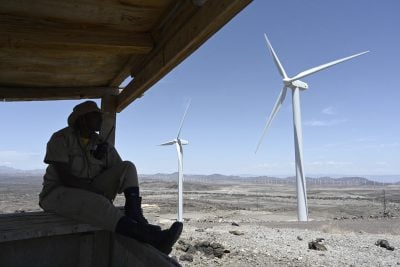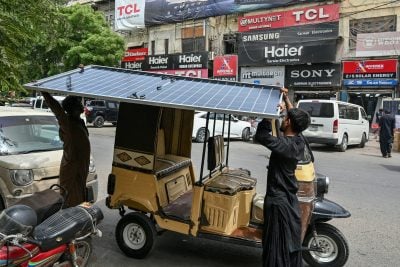There’s a long way to go, but the shoots of an industrial revolution are beginning to show, argues Justin Lin, former chief economist and senior vice president at the World Bank.
All low-income countries have the potential for dynamic economic growth. We know this because we have seen it happen repeatedly. A poor, agrarian economy can transform itself into a middle- or even high-income urban economy in one or two generations. That was true in the 19th and 20th centuries, and it remains true today.
Japan seized its opportunity in the years following World War II using labour-intensive industries – such as textiles and simple electronics – to drive its economy until rising labour costs eroded its comparative advantage in those sectors. That shift then allowed other low-income Asian economies – South Korea, Taiwan, Hong Kong, Singapore, and to some extent Malaysia and Thailand – to follow in Japan’s footsteps.
China, of course, is the region’s most recent traveller along this well-trodden path. After more than three decades of breakneck economic growth, it has transformed itself from one of the poorest countries on earth to the world’s largest economy. And now that China, too, is beginning to lose its comparative advantage in labour-intensive industries, other developing countries – especially in Africa – are set to take its place.
Indeed, ever since the Industrial Revolution, the rise of light manufacturing has driven a dramatic rise in national income. The UK’s economic transformation started with textiles. In Belgium, France, Sweden, Denmark, Italy, and Switzerland, light manufacturing led the way. Similarly, in the US, cities like Boston, Baltimore and Philadelphia became centres for producing textiles, garments, and shoes.
Until recently, few believed that Africa, too, could become a centre for modern manufacturing. But, with the right policies, there is no reason why African countries could not follow a similar trajectory.
Consider landlocked Ethiopia, which only 10 years ago seemed to be an especially bad bet. But then, the country built an industrial park near Addis Ababa and invited the Chinese shoemaker Huajian to open a factory there.
Huajian opened its doors in January 2012 with two production lines and some 600 workers. By the end of the year, it had employed 2,000 Ethiopians and doubled the country’s exports of leather shoes. Today, the company has 3,500 workers in Ethiopia producing more than two million shoes a year.
In 2013, spurred by Huajian’s success, the Ethiopian government created a new industrial park, with space for 22 factory units. Within three months, all of them had been leased by export-oriented companies from Turkey, South Korea, Taiwan, China and elsewhere. The World Bank has provided $250m to support the continued construction of these industrial parks.
The Ethiopian success story is just the start. As investors learn more about Africa, they will increasingly see what it has to offer. Indeed, the cost of labour in Africa is so competitive that Ethiopia could attract companies from countries as poor as Bangladesh.
Africa has a surplus of agricultural labour and too few other jobs. As foreign firms launch operations in the labour-intensive sectors in which Africa has a comparative advantage, they will train the local workforce.
Some workers will become managers. They will become familiar with the technology and learn how to maintain consistent quality in the production line. They will establish contacts with international buyers and investors. And, eventually, some of them will be able to raise capital and start firms of their own – export companies owned and operated by Africans.
The way ahead
Mauritius shows the path ahead. In the 1970s, the government set up industrial parks to process textiles and garments for export. At the time, most of the owners were from Taiwan or Hong Kong; today, more than 70% of the island’s industrial companies are locally owned.
With the right growth strategy, far-reaching change can come within a person’s lifetime – sometimes more than once. My native Taiwan is now a high-income economy. But when I was born there, in 1952, the island was poorer than almost every country in Africa.
Then it happened to me again. I moved to mainland China in 1979, when the country’s per capita income was less than one-third of sub-Saharan Africa’s. Today, China has become an upper-middle-income country, and it is on track to become a high-income country by 2020.
My hope is that I can witness a third economic transformation in my lifetime, this time in Ethiopia and other countries in Africa. If they stay on the tried and tested path of those who have gone before, there is every chance that I will.
Justin Yifu Lin
Justin Yifu Lin, former chief economist and senior vice president at the World Bank, is Professor and Honorary Dean of the National School of Development, Peking University, and the founding director of the China Centre for Economic Research. He is the author, most recently, of Against the Consensus: Reflections on the Great Recession.
Want to continue reading? Subscribe today.
You've read all your free articles for this month! Subscribe now to enjoy full access to our content.
Digital Monthly
£8.00 / month
Receive full unlimited access to our articles, opinions, podcasts and more.
Digital Yearly
£70.00 / year
Our best value offer - save £26 and gain access to all of our digital content for an entire year!

 Sign in with Google
Sign in with Google 




